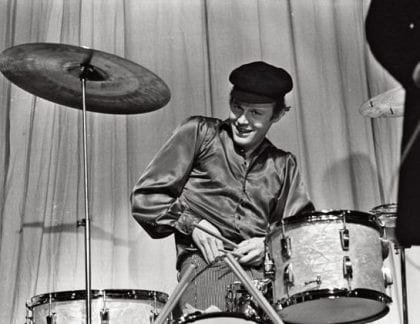You may recall E. Pluribus Gergely’s insistence on getting to the root of what justified the break in Tom Petty’s “American Girl.” It’s not enough for the man to have a functioning set of ears and his own opinions; he wanted…I don’t know what. Blood?
Well, he got an excellent and detailed reply from Townsman Scott (the other one), and EPG so graciously asked that I bring the reply The Main Stage so this glutton for punishment can try once more to break down the chemical makeup of a perfectly great debut single by an artist who’s not around to defend himself.
Here’s Scott’s reply, which EPG still can’t come to terms with. When I was a kid, this would be an ideal time for a wedgie. NOT for Scott!
Mighty late to the party here, but for what it’s worth, I’ve been thinking about this for some time: The honorable E. Pluribus Gergely wrote: “please give me your take on the “American Girl” break. I’m obviously missing something here. I appear to be the only human being on the planet who doesn’t think its some kind of half assed throwaway that created more post recording time for coke, whiskey, and bimbos.” I’m a bit confused as to why that isn’t a good enough reason…? 🙂 All right, lame jokes aside, here goes: I’d actually argue it’s an interesting compositional experiment, using that halftime breakdown in the place where a guitar solo would normally go, and serving a similar function. But it also mirrors the opening section, which is just 18 long bars of D major, leaving no doubt as to what the song’s home key is. (Although the bass plays different notes, supplying the harmonic interest in what could otherwise be an overly static section…but which really very much isn’t. It’s also a nice twist on the usual pedal point situation, which has the bass playing the same note for an extended period, while things change over the top.) After two verses and two choruses, we get to the instrumental section in question. As mentioned, it shifts into halftime, with a sweet groove courtesy the outstanding Stan Lynch (whose hi-hat work on this song is exceptional, not only providing relentless and energetic forward motion worthy of Benny Benjamin, but choosing some really unusual and extremely tasty places to open his hats). But whereas the intro had just hammered on the tonic, here we move to the V chord. By sticking almost entirely to the dominant, it imbues the section with a slight uneasy feel: we know where the center of gravity is, the center of gravity has been firmly established, and it ain’t here. The halftime should make things feel nice and easy, perhaps even a bit lethargic after the workout of the first half of the song. But because we’re on the G instead of the D, we’re on edge. We’re pretty sure we’re gonna get back home, but we’re not entirely positive. So when we do leave the V and return to the I, and the regular tempo kicks back in, we feel a sense of relief and release, despite the speedy nature. It’s an interesting choice on Petty’s part, but then there was a pretty fair amount of formal experimentation in those days. Even leaving aside the things like 20-minute prog epics (oh, “Supper’s Ready,” you are so silly and so magnificent. I love you madly, “Close to the Edge,” and I always will, despite your existence giving birth to the likes of, well, the entire Tales from Topographic Oceans LP), and the interesting and fascinating examples of songs with unrelated musical codas (“Layla” and “Thunder Road” being perhaps the two most successful examples, both of which have more than a little to owe the daddy of ’em all, “Hey Jude”), there’s the strange tinkly intro to the Velvet Underground’s “Sweet Jane,” which seems entirely unrelated. Don’t get me wrong, it’s lovely, and I dig it…but it has nothing to do with the body of the tune. (Then again, the “wine and roses” bridge is also strange, which may be why Lou Reed sometimes nixed it when playing live.) There’s the guitar solo section of “My Sharona,” which is nothing like the Neanderthal nature of the rest of the tune but instead goes into a sort of if the band Boston played power pop reverie. It’s a bizarre tangent down a completely unforeseen sideroad, and absolutely makes the tune, even if it’s not one of the first half-dozen things you think of when hearing the song’s title. I’ve always found the brief “hey” sections after the choruses and before slipping back into the verses strange if effective in Nirvana’s “Smells Like Teen Spirit,” but those are short enough to not really count. Most of all, of course, if you want to discuss unexpected and seemingly unreleased sections in pop songs, you should probably either start or end with the master: Brian Wilson’s uses of a not-dissimilar contrasting section in “Wouldn’t It Be Nice” not only also slows things down to a crawl for his sweet teenage pathos but the bizarre baroque section in “God Only Knows” comes out of nowhere, has little relation to the rest of the song, shouldn’t even remotely work and, of course, is beyond genius. Because it should not work. It’s so out of nowhere, so out of place, and it somehow—despite coming crazy early in the song, even!—makes perfect sense in the moment. Impossible, and yet there ’tis. So why did Tom Petty go into that halftime section? My guess: ‘cuz it felt great and sounded better. …how was that?




